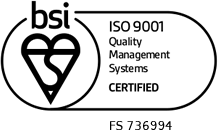The energy sector, in all its breadth and complexity, is one of the most fruitful and lucrative areas for the application of new materials science; most particularly, and perforce with the ascendance of environmental science and decarbonisation programmes.
The energy sector itself can be roughly partitioned into energy production/generation, energy distribution/transmission, and energy storage/conversion.
Energy Production/Generation
Currently, the following main technologies are brought to bear on energy production:
- fossil fuels, and petrochemicals – and our transition away from our dangerous dependency upon them
- nuclear fission – and the new priorities now demanded – away from weapons-grade by-products and nuclear proliferation, and towards higher safety, reduced environmental impact, greater sustainability – fourth-generation advanced reactor designs
- solar, photovoltaics – the coming of age of this technology as efficient, affordable, sustainable, consumer-grade, economics of choice
- wind – as with solar, a technology increasingly deployed as the economic means of choice
- hydro, tidal, wave, geothermal – continuing to compete with other methods, in niches where geography and economics are favourable to them
- heat pumps and energy scavengers – although technically more about conversion efficiencies than raw production, they nevertheless have an increasingly important role to play in energy systems as a whole
- biomass, biofuels – as yet in their infancy, but again promising to compete well where circumstances favour them
- nuclear fusion – still promising a holy grail of energy production, always tantalisingly near, perhaps now finally achievable within our lifetime
Each of these sectors has certain requirements in common:
- the need for materials that can withstand particular environmental stresses: eg: advanced lightweight carbon fibre composites used in wind and water turbines, radiation and heat resistant alloys and ceramics in nuclear reactor environments, wear and shock-resistant materials for bearings and machine parts.
- the need for materials that improve efficiency and reduce costs – eg: affordable and sustainable photovoltaics that work efficiently across all lighting conditions, rare earth alloys and superconducting materials for generating high flux magnetic fields, thermally efficient materials, osmotic materials, catalytic materials, functional materials of all sorts for new and emerging technology applications.
- the need for accurate, reliable, low-cost sensors and actuators of all sorts – increasingly the target of functional materials, micro-electro-mechanical systems (MEMS), and exotic and topological materials
- the near-universal need for ever more intense data communications and more powerful computational resources to drive and control energy systems – ties directly back to the perennial use of advanced materials science within the information and communications technology (ICT) sectors ( see section on: electronics, telecommunications, computing )
Energy Distribution/Transmission
This sector is presently dominated by electrical power transmission systems, and historically also by petrochemicals and gas distribution; in the future is likely also to feature various systems for the distribution of energy in the form of hydrogen and biofuels. As the transport sector weans itself off gasoline and diesel, our reliance on electrical transmission and other means must necessarily increase.
High-temperature superconductors
One of the better-known areas of materials science research has for a long time, been the production of so-called high-temperature superconductors (HTSs). By using superconducting cable within key parts of the electrical distribution network it is estimated that power transfer capacity could be increased 3 to 5 fold using the same size of conductor/right of way, as well as a significant reduction in losses on some key low voltage spurs, generator interconnects and transformers. Fast Superconducting Fault Current Limiters (SFCLs) and HTS based Dynamic Synchronous Condensers are also key applications under active development. The economics of such plans become increasingly viable as electric vehicle charging becomes ubiquitous and as distributed power generation (eg. from domestic and community solar and wind farms, possibly even small scale nuclear – so-called microgeneration schemes) comes steadily on stream over the next few decades.
Other examples of novel materials within the energy distribution domain include, for example, hydrogen loaded pellet systems as a way of delivering hydrogen-based energy more safely in automotive, aero and even domestic settings. This is an alternative to more conventional compressed gas storage and transportation, itself the target of advanced materials, for example, high strength composites that can safely withstand violent collisions and impacts without rupturing.
Energy Storage
In many settings, energy storage can essentially amount to the same thing as energy distribution – for instance, the case of hydrogen loaded pellets and compressed hydrogen (transport) cited above. In other cases, they are likely to be very different – for example, the use of hydroelectric reservoir pumping, compressed air, flywheel storage systems, and others.
Two energy storage systems of great present-day interest, however, especially from a materials perspective are advanced battery technology (esp. Lithium-Ion and related types), and so-called supercapacitors:
Batteries
Modern battery technology is moving incredibly fast, impelled by rising demand from electric (esp. automotive) transport, electrical consumer goods, and renewable energy storage applications in particular. Currently, much work is being done to improve the overall characteristics of conventional Lithium-ion batteries (impressive enough in their own right). A range of new materials and approaches centres around so-called ‘sold state’ Advanced Lithium-ion, batteries, where the damage-prone, short lifespan liquid and paste electrolytes are replaced with solid electrolytes and graphite electrodes are replaced with metal electrodes. Such batteries potentially offer higher voltage, higher capacity, greater safety and better processability, & lower cost. Other research and development are looking at Lithium Sulphur (over 4 times the energy density of conventional Li-I), Lithium-Oxygen, Lithium-Metal, Silicon-graphite, Sodium-ion, Potassium-ion, Aluminium-ion, Glass Electrolytes, 3D vs 2D electrode structures, and many other different approaches. A key focus is on better matching the energy density of anode and cathode materials in order to maximise the capacity and maximum discharge/charge rates of the overall device, whilst at the same time, mitigating material instabilities, fracturing and delamination that adversely affect lifetime and performance.
Supercapacitors
Supercapacitors (AKA: ultra-capacitors ), can provide 10 to 100 times the storage capacity of conventional capacitors (ie: almost comparable with batteries), but with much faster charge times, greater charge/discharge rates, greater working lifespans (far more charge/discharge cycles) than batteries can normally tolerate. Typically they are used for short-term energy storage, or burst-mode power delivery – eg: short duration high power applications such as regenerative braking in electric vehicles, uninterruptible power supplies, etc – rather than long term energy storage applications. Much current research and development are into hybrid (double-layer capacitance + pseudo-capacitance ), lithium-ion based supercapacitors, and the materials used, in order to increase cell voltage, improve specific energy, specific power, and cycle stability and reduce production costs.
Materials science and electrochemistry are absolutely central to such research and development efforts, and arguably the future of our society may also be consequently dependent on their success.
Energy Conversion
In a very general sense, energy conversion can often amount to the precise same thing as energy production and generation, discussed above. In some settings, however, it is helpful to discriminate, and there are currently two main technologies that are worthy of special mention, as they relate to geo-economic change and materials science; these are: hydrogen fuel cells and energy harvesting:
Hydrogen (and other) Fuel Cells
A fuel cell is an electrochemical cell that converts the chemical energy of a fuel (often hydrogen) and an oxidizing agent (often oxygen) into electricity through a pair of redox reactions. They have been known about for over 100 years and there are currently many different types including Alkaline fuel cells, Proton-exchange membrane fuel cells (PEMFCs), Phosphoric acid fuel cells (PAFC), Solid acid fuel cells (SAFC), High-temperature Solid oxide and Molten-carbonate fuel cells (MCFC) and many others – each with various advantages, disadvantages, according to application. Theoretically, fuel cells can demonstrate extremely high efficiency, although in practice this is often achieved by combining them with energy harvesting systems (see below), (eg: to recover lost heat). Applications are diverse and span stationary fuel cells for power at remote locations as well as fuel cell-powered vehicles covering satellites to submarines to automobiles to drones. There is ongoing debate as to whether the future is electric (battery + distributed electrical power) or hydrogen-electric (fuel cell + distributed hydrogen). Whichever comes to dominate, both technologies will continue to have an important part to play in a greener, sustainable future.
Conductive polymers and carbon nanotubes are amongst the many new materials being experimented with in fuel cell design.
Energy Harvesting
Energy Harvesting (aka energy scavenging) is the capturing, conversion, accumulation and storage of typically very small amounts of ambient energy from such sources as solar, thermal, wind, fluid flow, salinity gradient, blood sugars, sound/noise, small movements/vibrations, radio waves, and other unlikely sources. Most often it is used for powering small, autonomous, low power devices such as sensors and actuators and has a wide range of applications – from tiny sensors for medical and bioscience, to nanomotors and nanobot based drug delivery systems, to waste energy reclamation systems in chemical and industrial processes and machines.
Piezoelectric, photovoltaic, pyroelectric and thermoelectric materials are all regularly utilised, along with more elaborate metamaterials, electroactive polymers, electret and dielectric materials, magnetic, ferroelectric and multiferroic materials. Due to the often tiny scales of operation, much of the materials science and engineering required are carried out at the micro and nanoscale, introducing a whole host of new challenges and new design and manufacturing techniques.



